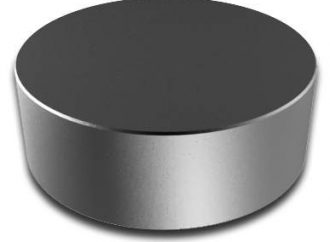
From stereo speakers and telephones to heavy lifting devices and medical imaging machines, magnets are used in a variety of applications. By definition, a magnet is any object that produces a magnetic field. They are able to attract or repel other magnets depending on the position of their poles. If the north pole of a magnet comes into contact with the south pole of another magnet, they will attract each other. On the other hand, if the north pole of a magnet comes into contact with the north pole of another magnet, they will repel each other.
Some magnets occur naturally in the Earth’s crust, such as cobalt, nickel and iron. Other magnets, however, are produced by blending multiple ferrous metals and elements together. Known as ceramic magnets, they offer a low-cost alternative to naturally occurring magnets.
Ceramic Magnets Explained
Originally invented in the 1960s, ceramic magnets are man-made magnets comprised primarily of iron oxide and strontium carbonate. To make ceramic magnets, companies mix these two elements together. Next, they heat them at a temperature of up to 2,000 degrees Fahrenheit, thus triggering a chemical reaction that converts the newly mixed elements into a ferrite material with a strong magnetic field.
Soft vs Hard Ceramic Magnets
Ceramic magnets can be classified as either soft or hard depending on their level of coercivity. Soft ceramic magnets are characterized by a low coercivity, whereas ceramic hard magnets are characterized by a high coercivity. With a low coercivity, soft ceramic magnets are able to change the position of their poles, making them ideal for applications like electrical conductors. In comparison, hard ceramic magnets have a high coercivity, so they are difficult to alter. Hard ceramic magnets are often used in applications where a permanent high-strength magnetic field is required.
Benefits of Ceramic Magnets
Ceramic magnets offer several noteworthy benefits, one of which being a low cost. Statistics show roughly three-quarters of all magnets produced globally consist of ceramic magnets. As a result, they typically cost less than other magnets, such as rare-earth magnets. For companies looking to purchase bulk quantities of magnets, this makes ceramic an attractive choice.
Aside from their low cost, ceramic magnets also offer a superior level of corrosion resistance when compared to their rare-earth counterparts. In fact, rare-earth magnets are often plated or coated with a protective exterior to inhibit corrosion. Ceramic magnets don’t require the use of a protective exterior since they are naturally protected against corrosion.
